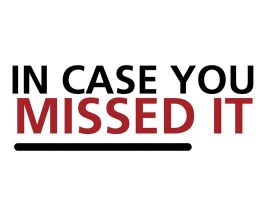
Last year I had the pleasure of interviewing for this blog professor, author, and social critic Corey Dolgon. I had heard Professor Dolgon speak at an IARSLCE conference, the International Association for Research on Service-Learning, and I was intrigued by his critique of certain universities' historic and ongoing actions that have disenfranchised or otherwise harmed the very communities the schools purport to serve. The talk was both wide in scope and specific in researched detail, the ability to achieve which is a defining characteristic of public intellectuals I admire, such as Henry Giroux, Robert Reich, as well as Professor Dolgon. The work of these scholars manages to clarify in plain language vast and intricate socio-political-and-economic movements in order to distill their tangible effects on our day-to-day lives.
Now Professor Dolgon has a new book out called Kill It to Save It: An Autopsy of Capitalism's Triumph over Democracy that traces the corrosive effects of recent (read post-Vietnam) political discourse and the public policy that flows from it regarding the civic institutions that uphold democracy, and thus on the common well-being of the citizenry. Such concerns, such considerations, may or may not play a part of any given service-learning course, depending on the discipline and academic level of the course. A capstone course in environmental sociology may well include as primary this type of far-reaching discussion, while a 1000-level English course designed to improve writing ability while engaging with community elementary schools may include such theoretical material in a limited, introductory amount, if at all. Yet whatever the service-learning course, the social disparities, deficiencies, and injustices addressed by community action are likely created or exacerbated by these larger forces operating just beyond our view. While teachers often internalize these realities, while they may inform our work in very close, almost second-nature ways, students may be only first learning about such broad historical contexts. Part of what we teach then in service-learning is not only course content or even the value and necessity of civic engagement, but also a larger awareness of, and a questioning of, the very real series of human choices that led to the situations the class addresses.
Kill It to Save It takes apart several myths of modern American life that have allowed public policy to work against the public good. The first to go is the idea of the rugged individual, free to succeed on his own terms without need of governmental assistance. As policies purport individual freedom and economic opportunity, the vast amount of economic gains go to a smaller and smaller few. At the same time, the sacrifices required to make this upward wealth transfer possible are to public education, public health care, and public resources. The public is sold a bill of goods about the boundlessness of upward mobility in this country, while the shrinking of public resources needed to support such mobility make it less and less likely. All investments in the public good are cast as socialistic handouts to the lazy, while the holders of wealth need only to keep the policy-setting system rigged in their favor to keep the subsidies, negative actual tax rates, and other forms of corporate welfare flowing their way.
We needn't look further than our own communities to see the damaging effects of years and years of such neoliberal policies. The homeless people on our streets are permanent communities within communities, structurally forever shut out of integration. Our poorest neighbors are crammed into the least funded schools, almost ensuring by design their failure. Entire neighborhoods bear the marks of years of redlining, employment discrimination, and racist law enforcement policy, from the war on drugs to stop-and-frisk. Professor Dolgon traces these situations back to the public discourse and propagandized ideologies that shaped the policies that created them.
No matter what aspect of social injustice our service-learning course seeks to address, it's worth remembering that no form of injustice is naturally occurring. Our society was made by us, and can be changed by us as well.






